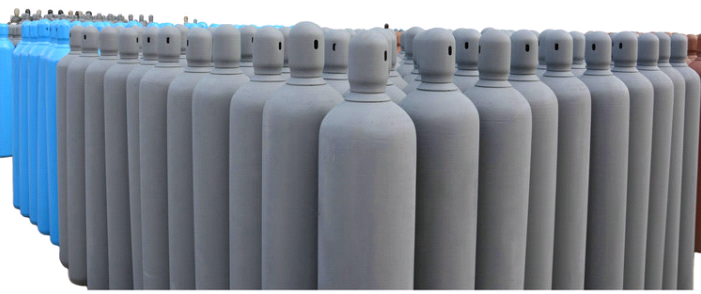After filling, any gas cylinder must be inspected one by one by the inspector according to the specified inspection items. If it does not meet the technical requirements, it shall be properly handled, otherwise it is strictly prohibited to leave the station, so as to ensure that the filling quality of the gas cylinder meets the requirements and ensure the safety of the gas cylinder during storage, transportation and use.

Except for special requirements, all cylinders must be inspected for the following items:
1、 Whether the bottle wall temperature is abnormal;
2、 Whether the bottle body has bulge, deformation, leakage or defects missed inspection before filling;
3、 Whether the air tightness of the bottle valve and its connection with the bottle mouth (bottle seat) is good;
4、 Whether the form, material, condition and assembly of the bottle valve meet the safety technical requirements;
5、 Whether the bottle cap (or shield) and shockproof ring are complete and intact;
6、 Color mark and check whether the color mark is complete and meets the technical requirements;
7、 Whether the gas cylinder is within the valid service life of regular inspection;
8、 Whether the gas purity and impurity content in the sampling analysis bottle are within the specified range;
9、 Whether the measured gas pressure, weight, or pressure and weight in the bottle are within the specified range.
For the cylinder with fusible gold plug on the cylinder body, the inspection item of "whether the fusible gold plug on the cylinder body is intact and sealed" must also be added.
The inspection of the first to seventh and fusible plugs can be carried out after the cylinders are unloaded from the filling platform to the inspection site.
For the purity analysis and pharmacological determination of permanent gas cylinders, that is, the inspection of the above eight and nine items, it is better to arrange it 2 hours after the filling of the cylinder, that is, after the temperature inside and outside the cylinder is similar and the gas in the cylinder is balanced before and after filling, so as to obtain more practical analysis and determination results.
The re measurement of the filling weight of liquefied gas cylinders can be carried out after the filling is completed, but the purity analysis can also be arranged 2 hours later.
The dissolved acetylene cylinder must stand for more than 8 hours after filling as required, so the filling volume measurement, purity analysis and pressure measurement of the dissolved acetylene cylinder should be arranged after the static chamber (the best time is 24 hours).
After the permanent gas cylinder is kept for more than 2 hours, the gas temperature in the cylinder is close to or equal to the ambient temperature, so it can be measured whether the filling pressure in the cylinder meets the standard requirements according to the ambient temperature.
Although the filling capacity of permanent gas cylinders is not as strict as the limit on the filling capacity of liquefied gas cylinders, it cannot be arbitrarily overfilled without limit. Because the flow of gas cylinders is very high, and most of the gas has no storage period limit, the gas cylinders filled in the north may be transported to the south for use; Cylinders filled in winter may be stored in summer. Overloading may also cause overpressure hazard of gas cylinder. Therefore, in the inspection, there should be no point of view that "it is OK to exceed several pressures". If overpressure gas cylinders are found, they must be introduced into the gas cylinders to be filled through the filling platform or returned to the gas cabinet through the return valve.
Permanent gas cylinders with filling pressure lower than the standard can be refilled if circumstances permit.
When checking whether the liquefied gas cylinder is overloaded, it shall be placed on the weighing instrument and the overloaded liquid shall be pumped out with an air pump. Refill the gas cylinders with insufficient filling capacity.